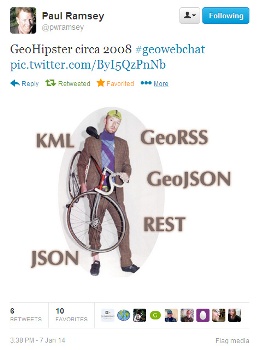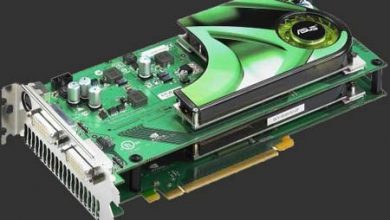The 2014 predictions of the geofumado context: Paul Ramsey
Beginning January, Paul Ramsey released his predictions for this year in the geospatial field; Taking into account that it is someone who has been in this environment for more than 10 years and that the result of their contributions to open source software received in 2008 the Sol Katz Award presented by the OSGeo Foundation, we bring it in transliterated version.
Ten years ago, when PostGIS was just version 0.8, the world was fresh and new, I was totally convinced that our industry was on the cusp of the open source revolution. When people got to try out the new, flexible, new tools for building systems, they naturally discarded their archaic proprietary software and quickly began to move into a more enlightened existence. He was excited, he felt the geofumed of what was coming.
And always, almost every year since 2000 someone announced, somewhere, with all their soul that (finally) “This year will be the year of Linux desktop".
Something strange happened along the way in the open source revolution. It turned out more than that. Overall, the change has been slow, gradual, but always in the direction of more open source use cases.
So, in the expectation of what can happen in a new year of the open source geospatial world, my predictions may be unwise - The big things are going to change little, but at the borders we will have important changes:
 Oracle will announce that they are losing customers to PostgreSQL. Although MySQL is always in the media as “the open source database”, it has been PostgreSQL that has had the enterprise capabilities from the start to go hand in hand with the big boys. As Oracle continues to raise maintenance prices to please Wall Street, customers are beginning to think of the unthinkable: Maybe it's time to re-evaluate your database standard.
Oracle will announce that they are losing customers to PostgreSQL. Although MySQL is always in the media as “the open source database”, it has been PostgreSQL that has had the enterprise capabilities from the start to go hand in hand with the big boys. As Oracle continues to raise maintenance prices to please Wall Street, customers are beginning to think of the unthinkable: Maybe it's time to re-evaluate your database standard.
The coolest will continue open source in the foundations. Whether it's running on Linux, GDAL capability with satellite imagery from PlanetLabs, or the latest Android tablets, the coolest thing will be on the shoulders of open source and the rest is profit.
Most of the open source action will be in JavaScript. Juan mentioned That programming for the geospatial field is increasing towards polyglot, but the open source arena right now is the JavaScript world, both at the client and server level. There is a lot of noise and fury there. Some of it means nothing, but some of it is setting the standards that we will be using for the next decade. JavaScript reminds me of Java circa-2005: multiple projects, with similar functional goals, competing design philosophies, and enormous potential. The separation of the noise signals in these kinds of contexts leads to the actual experience, so I'm glad we have some of the best and brightest JavaScripters in the geospatial world on our team.
PaaS will join open source in a natural evolution. And since I'm just getting to know the platform as a service (PaaS), I see that it has both the promise of open source and the same learning curve. As a result, things will fall under their own weight, slowly it will be integrated into the core of IT, although we experienced ones will catch up with it and the next generation will move into operational tasks. And since PaaS is Open Source by definition, growth in the cloud and the components for building systems will remain and open source will be enhanced.
Iterative open source style development will gain more ground. The public failure of the healthcare.gov site and the cascading trend of the methodology can only be good for good development. There are already a lot of capabilities in companies, but it is still something that only “progressive” organizations do, it is not the generality. The more people think about technology in open source ways (that it's a process, not a product, it's about managing change, not reaching an end state), the better open source becomes.
Organizations will be eager to work with OpenStreetMap, and some will find a way. While licenses will continue to limit many public organizations to participate, others will make peace and begin to integrate OSM into their workflows. The lucky ones will receive the endorsement of their lawyers to work with OSM directly. In the less fortunate case, OSM will be used as a common thread to keep maps updated… 🙂.
Boudlesss will integrate more open source technologies into its OpenGeo Suite, making it even easier to get started with enterprise geospatial systems. Well that was easy since Eddie already mentioned it, But I also have my own reasons.






